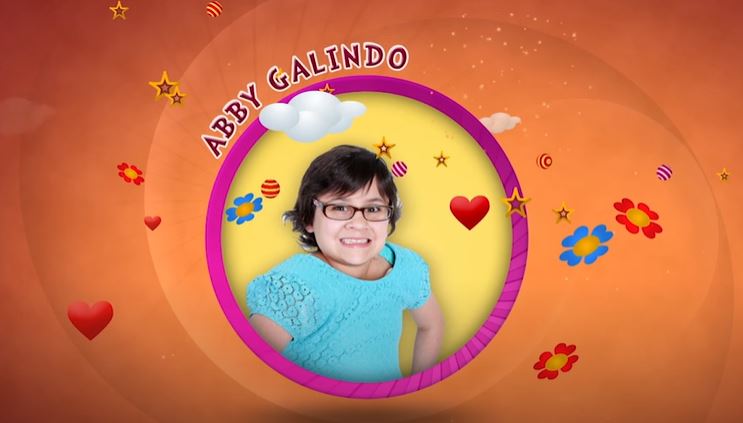Abby Galindo
- Author: Abby Galindo
- Category: 2014

Two hundred. The number of known cases worldwide of Gorham's Disease. According to Abby Galindo, she's number 201.
With only 10 years of life experience under her belt, Abby is the epitome of resilience. This brave little girl has conquered the odds to bounce back from a disease so rare it only occupies one paragraph in most medical school textbooks.
"Abby was complaining about back pains the whole week," says Laurie Galindo. "By the end of the week, she was in a lot of pain. It was hard for her to move and get up, so I made an appointment with her pediatrician, Dr. Wagnon."
Abby describes the pain like carrying a backpack full of rocks all day.
"When I laid down it was hard to breathe, so I had to get a bunch of pillows to hold my head up when I was sleeping," she says.
Dr. Michael Wagnon, Shannon Clinic pediatrician, often sees children with back pain that usually results from a sports injury, muscle strain or fall. Abby had fallen a few times, jumped in the swimming pool in shallow water, slid down the slide and fell—did normal kid things within a year's time. But, Dr. Wagnon ordered a chest and back x-ray to be thorough.
"Nothing showed up on the initial image readings," he says. "However, within the next several days Abby's pain became very severe and she began experiencing difficulty breathing. Her mom took her to the Urgent Care clinic over the weekend, and another round of x-rays found vertebrae and rib abnormalities and fluid on Abby's lungs."
After receiving this news, Laurie was told to pick Abby up from school and take her to the emergency room. Immediately upon arrival, tests began to determine the cause of Abby's symptoms. Dr. Wagnon assessed the results and talked to the doctors at Cook Children's Hospital. They performed thoracentesis three separate times to drain the fluid off her lungs.
"We were in the hospital at Shannon for two days, and on September 6 they told me I needed to go home and pack a bag and we needed to be at Cook's as soon as possible," Laurie recalls. "And just like that, our world was turned upside down. They flew Abby and I to Cook's and she immediately had a rib biopsy, spinal biopsy, bone marrow biopsy—they ran all kinds of tests, lab work, blood work, etc. They checked for lupus, anything cancerous. They were eliminating all these things, but we still didn't know what was going on. On the seventh day, they finally diagnosed Abby with Gorham's Disease."
Gorham's Disease, also known as Vanishing Bone Disease, is a degenerative bone disease that causes the bones to become extremely brittle, sometimes to the point of breakage. The Galindos learned the disease had already affected Abby's vertebrae and ribs and it was possible the disease could spread to other parts of her body. If left untreated her spine could disintegrate, causing paralysis.
Abby's doctors consulted with physicians around the country who had dealt with Gorham's Disease. Luckily, they were able to acquire the medicine she needed and the family was able to stay in Texas. To combat the fluid in her lungs, Abby had a port and bilateral chest tubes placed. She was treated with a chemotherapy drug and special vitamins to help increase the strength of her bones and decrease the fluid on her lungs.
"Before her diagnosis, Abby was running around and playing like a normal kid," her parents say. "When they started her treatments, she had to be flat on her back. They had a brace made for her. Besides all the pokes, surgeries and medications, getting used to the brace was one of the hardest things. When we looked at it, we wondered how she was ever going to fit in it. It was so tight, we would put it on and she would just cry. But, she had to get used to the brace before we could go home."
Abby was in the hospital for three months. Laurie stayed with her the entire time, and Raymond traveled back and forth, and Abby's younger sister, Raegan, and brothers Dylan and Joseph, came to visit whenever possible.
"Seeing her in pain; it was hard on all of us," Raymond says.
Abby's brace starts underneath her arms and rests on her hips. She must wear it every day for 10 to 12 hours to keep the pressure off her spine or else it could snap. Abby laid in bed, on her back, for six weeks before she was brave enough to sit up and get out of bed into a wheelchair. Her motivation to get up came in the form of trick-or-treating for Halloween.
"She would just cry when they would put the brace on her, it was horrifying," Laurie recalls. "The only time she takes it off is when she goes to bed, but she has gotten used to it now."
Last summer, Abby's oncologist stopped her chemo treatments because the fluid on her right lung was remaining steady. The results of a chest x-ray the next month were almost normal. In February, tests showed an accumulation of fluid on one lung, but not enough to take any action so Laurie just watches Abby for breathing problems and chest pains. In September, Abby will undergo another CT scan to reveal how her spine is doing. Until then, she will continue to take daily medication. Her daily medication regimen does not match her youthfulness—vitamin supplements, calcium and her treatment drugs—but her bones are looking better.
"She has come a long way and is doing so much better," her parents say. "She's a happy girl for the most part and that's what amazes us about her. She can't do everything other kids can do. She gets upset sometimes, but she bounces right back. We don't know what's going to happen in the future, but we take it a day at a time and are enjoying every moment."
Along with Dr. Wagnon, Abby is followed closely by a neurosurgeon, endocrinologist, orthopedic surgeon and hematologist/oncologist. Abby still visits Cook Children's every three months, but is also able to stay in San Angelo and receive treatment. She sees several of the specialists from Cook Children's at the clinic located at the Shannon St. John's Campus or via telemedicine appointments. She has CT scans every few months and will undergo a bone density study once a year to track the state of her bones.
"Knowing what Abby and our family went through being away from each other, it made all the difference in the world for her to come home and receive her chemo treatments at Shannon," Laurie says. "I noticed an immediate change in her overall attitude and emotional state."
Surgery is also a possibility after Abby stops growing. Rods would be placed in her back to help stabilize the weak area of her spine. She has some curvature of her spine, but not enough to require surgical action at this point in time.
"In regard to her future, since her condition is very rare, the prognosis can be grim," Dr. Wagnon says. "However, Abby is very stable right now and continues to improve. She has increased her mobility and continues to thrive emotionally and academically. We hope for a favorable prognosis in the future. She is a fighter and has withstood tremendous amounts of pain and has continued to move forward."
The Galindo family has bounced back from a nightmare they thought would never end. They are enjoying their creative, feisty daughter and look to her for inspiration each day.
"When I think I'm tired, or have a headache, I stop myself and ask why I'm complaining because it's nothing compared to what she's been and is going through," Laurie says. "We are in awe of her."
As for her pesky back brace, Abby and her doctors have special plans for it one day.
"We made plans to light it on fire," she grins. "Or maybe we will throw it off a building or let our dog chew it up."

.jpg)

.jpg)